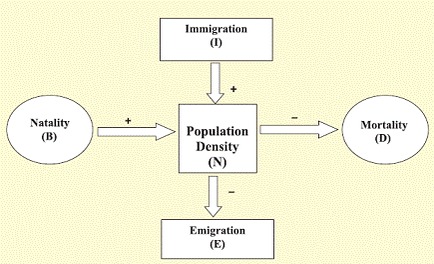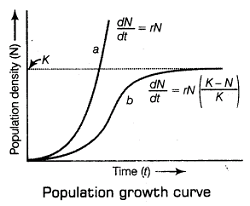
CBSE Class 12 Biology Notes Chapter 13: Chapter 13 of CBSE Class 12 Biology Organisms and Populations is an important chapter for students preparing for their board exams. These notes focus on how organisms interact with their environment and each other breaking down complex ecological concepts into simpler ideas for easy understanding.
By studying these notes students will gain a deep understanding of ecological relationships, population dynamics and environmental factors that influence survival and adaptation. This foundational knowledge not only helps in academic success but also equips students to contribute positively to environmental conservation and future scientific studies.CBSE Class 12 Biology Notes Chapter 13 Organisms and Populations Overview
CBSE Class 12 Biology Notes for Chapter 13 Organisms and Populations have been prepared by subject experts of Physics Wallah. These notes provide a clear and concise overview of key concepts such as ecological interactions, population growth, adaptations and environmental factors that affect living organisms. With these notes, students can build a solid foundation in ecology making them well-prepared for their board exams and future studies in biology.CBSE Class 12 Biology Notes Chapter 13 PDF
For an in-depth understanding of Chapter 13 Organisms and Populations in CBSE Class 12 Biology, you can access the detailed notes prepared by subject experts. To download the complete notes in PDF format click the link provided below:CBSE Class 12 Biology Notes Chapter 13 Organisms and Populations PDF
CBSE Class 12 Biology Notes Chapter 13 Organisms and Populations
Here we have provided CBSE Class 12 Biology Notes Chapter 13 Organisms and Populations-Organisms
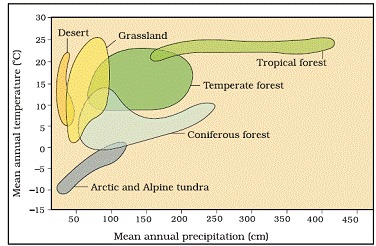
Population Interactions
Population interactions refer to the relationships between different populations living in the same environment. These interactions play a crucial role in the dynamics of ecosystems and include several types, such as predation, competition, parasitism, commensalism and mutualism. 1. Predation Predation is a biological interaction where one organism, known as the predator, kills and feeds on another organism, known as the prey. Predators use prey as a source of energy and nutrients, which is essential for their survival. For example, lions hunting zebras is a classic predator-prey relationship. Predation not only controls prey populations but also drives natural selection, encouraging adaptations in prey species, such as camouflage or enhanced speed, to escape predators. 2. Competition Competition occurs when two or more organisms or species vie for the same resources, such as food, water, or shelter, within the same environment. In such interactions, both competitors are harmed because the available resources are limited, and neither gets the full benefit. For example, lions and hyenas competing for the same prey in a savanna leads to reduced access to food for both species. Competition can occur between individuals of the same species (intraspecific competition) or between different species (interspecific competition). 3. Parasitism Parasitism is an interaction where one organism, known as the parasite, lives inside or on the body of another organism, known as the host, and derives benefits at the expense of the host. The parasite gains nutrients and shelter from the host, often causing harm to the host in the process. A common example is a tapeworm living inside the intestines of a human, where the parasite consumes nutrients meant for the host, causing malnutrition or illness. Parasites can affect the health, behavior, and even survival of their hosts. 4. Commensalism Commensalism is a type of population interaction where one organism benefits, while the other is neither helped nor harmed. In this relationship, the benefiting organism gains access to resources such as food or shelter, without impacting the other organism. An example of commensalism is barnacles attaching themselves to the shell of a turtle. The barnacles gain the advantage of being transported to different feeding grounds, while the turtle is unaffected by their presence. 5. Mutualism Mutualism is an interaction where both species benefit from the relationship. This cooperative interaction enhances the survival and reproductive success of both organisms involved. A well-known example is the relationship between bees and flowering plants. Bees collect nectar from flowers for food, while helping the plants with pollination, which is essential for the plant's reproduction. Mutualism encourages co-evolution, where both species evolve traits that strengthen their partnership.Plants: Morphological and Chemical Defenses
Plants have developed various morphological and chemical defenses to protect themselves against herbivores and environmental stressors. These adaptations help ensure their survival and reproduction in competitive ecosystems.Morphological Defenses
Thorns :
- Cactus : Cacti are known for their thick, spiny thorns that deter herbivores from feeding on them. These thorns serve as a physical barrier, preventing animals from accessing the fleshy parts of the plant, which store water and nutrients.
- Acacia : Acacia trees also have sharp thorns that protect them from browsing animals. Some species even have mutualistic relationships with certain herbivores, where the thorns act as a deterrent while providing shelter for ants that protect the tree from other threats.
Chemical Defenses
Plants can also produce and store a variety of toxic chemicals to deter grazers and browsers:- Calotropis : This plant produces latex containing toxic compounds that can deter herbivores. The latex can cause irritation and discomfort, making it less likely for animals to consume the plant.
- Nicotine : Found in tobacco plants, nicotine is a potent neurotoxin that affects the nervous system of insects and herbivores, discouraging them from feeding.
- Caffeine : Present in coffee and tea plants, caffeine serves as a natural pesticide, affecting the behavior and reproduction of herbivorous insects and helping to protect the plant.
- Quinine : Extracted from the bark of the cinchona tree, quinine is toxic to many herbivores and has been used medicinally to treat malaria. Its bitter taste acts as a deterrent to grazing.
- Strychnine : This toxic alkaloid, found in the seeds of the strychnine tree is extremely poisonous and deters herbivores due to its lethal effects.
- Opium : Derived from the opium poppy, this plant produces morphine and other alkaloids that can have narcotic effects on animals making it less palatable.
Benefits of CBSE Class 12 Biology Notes Chapter 13 Organisms and Populations
Focused Revision : The notes highlight important concepts, definitions and examples, allowing students to focus their revision on important topics that are likely to appear on the exam.
Improved Retention : Simplified explanations and organized content help students retain information better, making it easier to recall important details during exams.
Confidence Boost : Having a well-structured set of notes increases students confidence in their knowledge and preparation helping to reduce exam anxiety.
Integration of Topics : The notes connect concepts from various chapters and fields of biology, allowing students to see the bigger picture and understand how different biological principles interrelate, which can be beneficial for integrated exam questions.
Quick Reference : The notes are a quick reference guide during revision sessions, enabling students to quickly refresh their memory on important topics without sifting through entire textbooks.
CBSE Class 12 Biology Notes Chapter 13 FAQs
What is the definition of an organism?
What is a population in biological terms?
Why is understanding organisms and populations important?
How do abiotic factors affect populations?

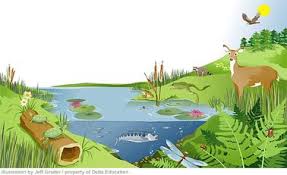 All organisms have the ability to adapt to different environmental conditions, which is largely due to genetic variations. This adaptability enhances their chances of survival in diverse habitats. For example, the polar bear has distinct traits that enable it to thrive in the harsh, cold climate of Antarctica. Its dense fur coat provides insulation from the cold and protection from predators, while a waxy coat repels water helping to retain body heat. These features are crucial for its survival in such extreme conditions.
All organisms have the ability to adapt to different environmental conditions, which is largely due to genetic variations. This adaptability enhances their chances of survival in diverse habitats. For example, the polar bear has distinct traits that enable it to thrive in the harsh, cold climate of Antarctica. Its dense fur coat provides insulation from the cold and protection from predators, while a waxy coat repels water helping to retain body heat. These features are crucial for its survival in such extreme conditions.
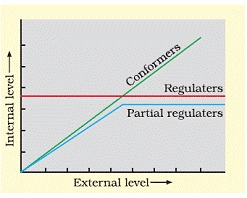 A population refers to a group of individuals or organisms of the same species living in a specific geographical area at a particular time, with the ability to interbreed. For example, the population of deer in a forest.
A population refers to a group of individuals or organisms of the same species living in a specific geographical area at a particular time, with the ability to interbreed. For example, the population of deer in a forest.

